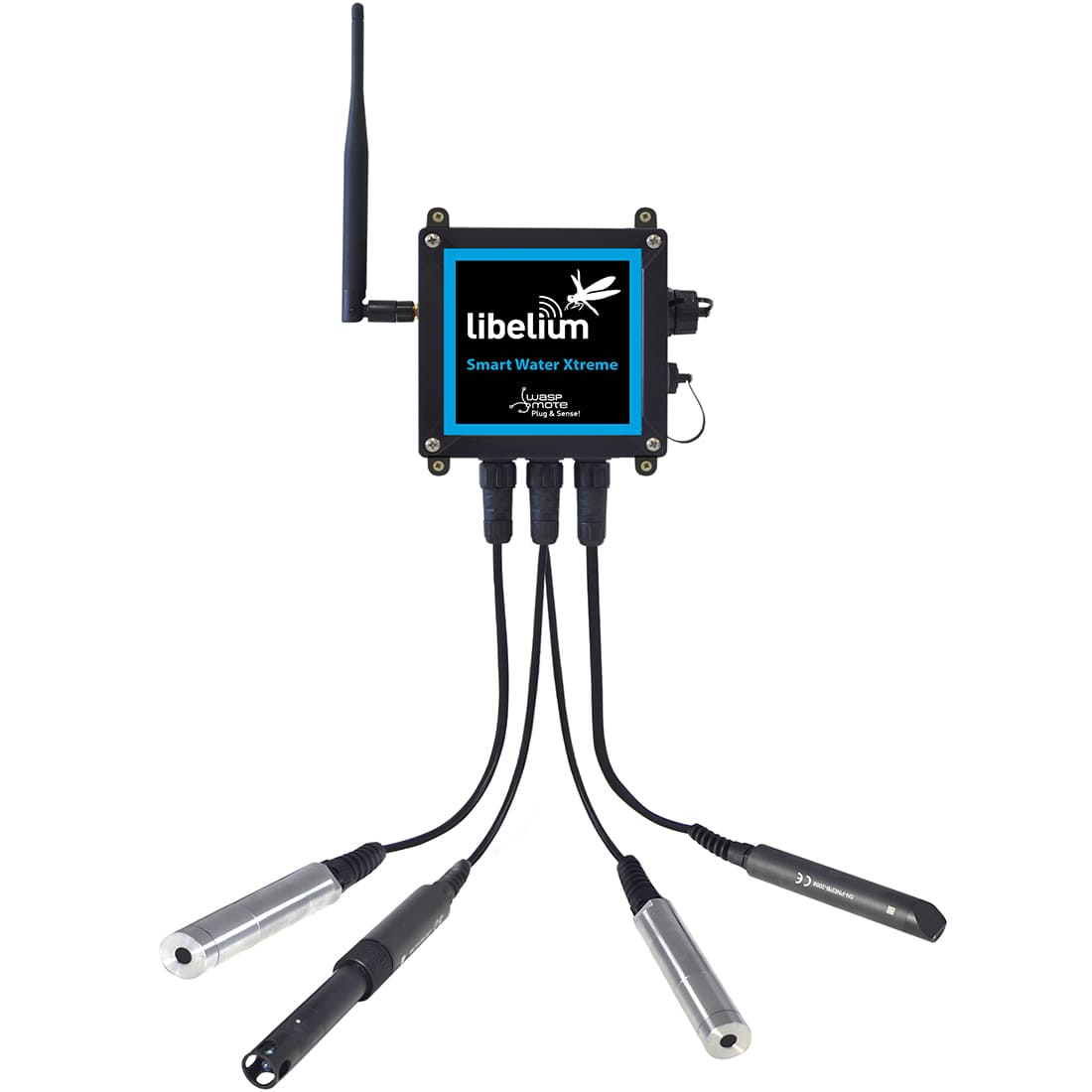Libelium improves the accuracy and robustness of its new Smart Water Xtreme Monitoring Platform based on IoT technology. The enhanced device includes top market performance sensors from the most prestigious manufacturers for applications such as potable water monitoring, fish farms management, chemical leakage detection, remote measurement of swimming pools and spas, and seawater pollution.
Population growth and climate change impact directly in water scarcity, one of the main sustainable challenges faced by IoT technology providing benefits like consumption reduction up to 10% or wastage and leakage decreasing up to 20%.
The new solution now features digital and optical sensors that provide incredible accuracy, more robustness and immunity to environment oscillations. The water quality parameters measured include dissolved oxygen, pH, redox (ORP), conductivity, salinity, TDS – Kcl (total dissolved solids), temperature, nephelometric turbidity, suspended solids and sludge blanket. New ion selective probes have also been added to detect ammonium, nitrate, chloride, sodium and calcium presence.
Waspmote Plug & Sense! Smart Water Xtreme
“For the first time, the platform contains sensors to control biochemical and organic levels pushing Smart Water Xtreme as one of the most complete and versatile water monitoring platforms in the world,” states David Gascón, Libelium’s co-founder and CTO. These sensors are fluorometers for chlorophyll, phycocyanin (freshwater BGA), phycoerythrin (marine BGA), CDOM/fDOM (colored dissolved organic matter/ fluorescent dissolved organic matter).
Table: New Sensors for Waspmote Plug & Sense! Smart Water Xtreme
The probes work with RD-485, SDI-12 digital protocols that allow a sensor probe cable length of up to 50 meters and include robust IP68 sensors that work underwater at a pressure of up to 5 bar (50 meters). This feature allows the study of the water column, a concept used in oceanography to describe the physical and chemical characteristics of seawater at different depths. It is now possible to place the sensors at different depths for applications like dissolved oxygen control.
Additionally, each sensor includes a calibration report that assures that they have been tested and calibrated. An internal temperature sensor is even used in each probe to get a better accuracy of the specific parameter.
New Sensors for Waspmote Plug & Sense! Smart Agriculture Xtreme
| Manufacturer and Model | Measured parameters | Applications |
| Aqualabo OPTOD |
|
|
| Aqualabo PHEHT |
|
|
| Aqualabo C4E |
|
|
| Aqualabo NTU |
|
|
| Aqualabo CTZN |
|
|
| Aqualabo MES 5 |
|
|
| Eureka Fluorometer: Chlorophyll a – blue |
|
|
| Eureka Fluorometer: Chlorophyll a – red |
|
|
| Eureka Fluorometer: Phycocyanin (freshwater BGA) |
|
|
| Eureka Fluorometer: Phycoerythrin (marine BGA) |
|
|
| Eureka Fluorometer: CDOM/fDOM |
|
|
| Eureka Ion-selective electrodes (ISE’s): Ammonium |
|
|
| Eureka Ion-selective electrodes (ISE’s): Nitrate |
|
|
| Eureka Ion-selective electrodes (ISE’s): Chloride |
|
|
| Eureka Ion-selective electrodes (ISE’s): Sodium |
|
|
| Eureka Ion-selective electrodes (ISE’s): Calcium |
|
|
Libelium’s R&D Team highlights that some sensors of the new platform are especially robust and need less maintenance; such as the inductive conductivity sensor (CTZN), whose measurements are not affected by fouling (accumulation of organic material on the sensor’s surface). Depending on the application, the sensor probes calibration period may be several months.
In order to be placed in pipes or tanks, a range of mounting accessories are available for each sensor. Furthermore, the platform includes protective wildlife accessories.
For more information about our products contact the Libelium Sales Department.
More info:
- For technical details on Waspmote Plug & Sense! Smart Water Xtreme: Waspmote Plug & Sense! Smart Water Xtreme Technical Guide.
- Read more about Libelium sensor product lines in the Waspmote, Waspmote Plug & Sense! Sensor Platform and Meshlium Gateway websites.
References:
- Smart Water Sensors to monitor water quality in rivers, lakes and the sea
- Protecting and conserving the beluga whale habitat in Alaska with Libelium’s flexible sensor platform
- Controlling fish farms water quality with smart sensors in Iran
- Controlling quality of irrigation water with IoT to improve crops production
Discover our Smart Water Kits at The IoT Marketplace.







